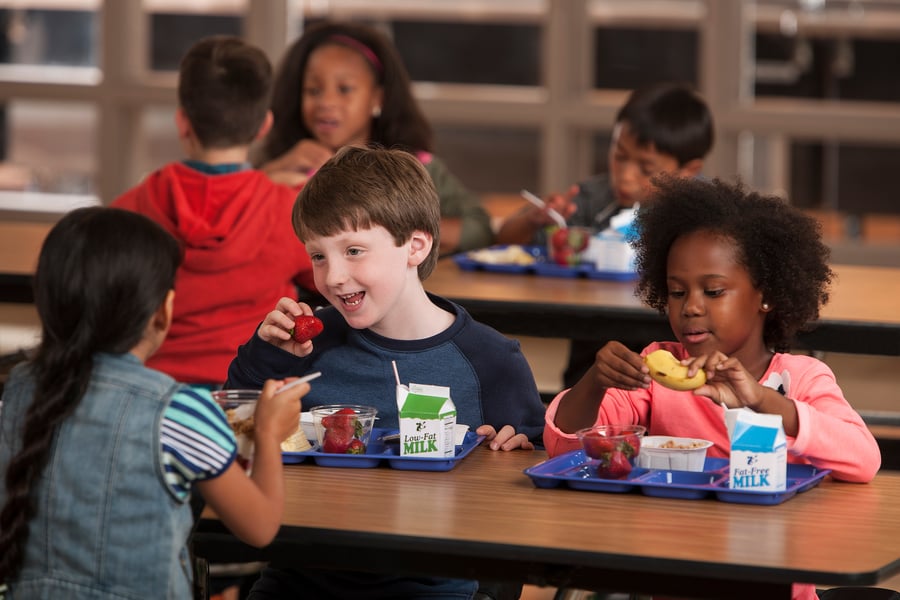The Top Three School Foodservice Refrigeration Challenges

How can we get more students to eat healthier lunches at a lower cost? That's the goal of any school nutrition director, and it's the main challenge every school nutrition director faces when school resumes every fall.
When you dissect this question, though, it breaks down into three main points: student participation, higher nutritional value and cost. They are all interconnected.
Student participation is important because if students don't eat school lunches, the districts will lose important revenue to help provide those lunches for the students who do eat them. Student participation is also important because schools can play a greater role in providing healthier nourishment.
Higher nutritional value is important because it directly relates to school performance. Over the last several years, there's been the addition and removal of many regulations aimed at helping kids get healthier school lunches, but no matter where a specific district stands on the regulatory issues, pretty much everyone agrees healthier options for students are a good thing. Of course, these options must also be tasty, or the school will lose participation.
Finally, cost is important for obvious reasons. A school district will only have a certain allotment of funds available to purchase each meal. A district will need to make new equipment purchases, upgrades and service. These decisions play a direct role in the quality of food they can provide, both from nutritional value and an appeal to student tastes.
These are not the only challenges a school will face, though.
The biggest challenge right now, in fact, might be labor. It's increasingly difficult for school systems to find, hire and retain good employees. The restaurant industry can pay more, but even the restaurant industry is struggling.
Another challenge is facilities. What type of condition is the cafeteria in before the school year starts? What changes need to be made during the year? Is equipment aging or breaking? Is the school making the best use out of the space it has? Does it even have enough space? There are a lot of questions when it comes to facilities.
Now, let's combine all of these challenges and see how they relate to school foodservice refrigeration.
OUTDATED EQUIPMENT
As we've seen throughout the Covid pandemic, school cafeterias that were prepared with optimal equipment fared better than those that did not. For example, the need to transport food to classrooms was more easily achieved for school districts that invested in mobile serving solutions.
While it's important to have the right equipment for your school's foodservice needs, it's equally important to ensure that the tools are up-to-date. This is especially true when it comes to walk-in refrigerators and freezers.
As schools move towards year-round sessions, walk-in refrigerators and freezers will be subjected to more intense use during the hot summer months. If your current refrigeration systems are outdated, it may be time to consider replacing them altogether. Your school can save money on energy costs while still providing quality foodservice for students.
FOOD WASTE & SAFETY
The number one goal of a school refrigerator or freezer -- actually the number one goal of the entire school nutrition program -- is to serve safe and healthy foods to students and staff. No other piece of commercial foodservice equipment is more aligned with the overall goals of the program than refrigerators and freezers. This means walk-ins must work properly. Foods must be stored according to HACCP regulations. Equipment must work to preserve the nutritional values of the food.
Food waste, of course, is closely related to food safety. You don't want to throw away foods too late for fear of making students sick, but it shouldn't be thrown away too early either. It's important to find the right balance between the two, especially considering we throw away as much as 40 percent of our food supply in the United States, which is like throwing away two twenties out of every 100 dollars. For school foodservice programs, that's simply not sustainable.
SPACE
Space is critically important in any foodservice operation, but especially in schools. In some cases, reduced kitchen sizes can impact the speed and efficiency with which a school can provide high volume lunch service to thousands of people. This means students have less time to eat, making them more likely to bring lunch from home, meaning it hurts the overall participation levels. In terms of refrigeration, if a school cafeteria can free up space by remoted outside the building, it can make better use of the space provided.
Are you looking for refrigeration equipment designed for longevity and ease of service?
Contact our Chill Team to learn more about the ZS series designed just for schools in mind.




